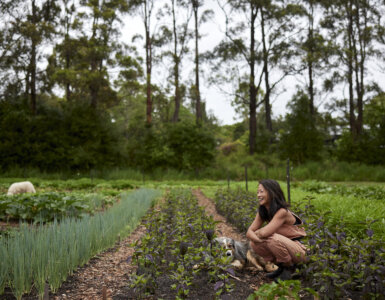Shrugging on a wool jumper, most people notice its incredible warmth and softness. However, increasingly, shoppers want to know how the jumper is made – and on which woolly back the jumper has been grown. Enter Will Morphett.
A life in agriculture wasn’t on the radar of the third generation grazier until his last year of boarding school in Geelong. It was there that Will – who studied via school of the air for primary school from his parents’ property on the Hay Plains in NSW – had a life changing meeting with his careers advisor.

Source: Zelda Chambers
“He pointed out the huge potential which existed for young people in the agricultural industry,” Will says. “Soon after this meeting, I started down the path to gain experience and knowledge relevant to grazing production, before returning home to join the family business.”

Source: Zelda Chambers
Coming home from university in Victoria, he settled on his grandparents’ merino property, Alma, near Booligal in the Riverina region. Here, Will manages 8,000 merino ewes alongside his brother Peter, father Graham and mother Helen.
“In our region alone, families in their 20s and 30s have returned to seek a career on the land,” Will says.
High commodity prices, increased on-farm efficiency and improved digital connectivity has helped this generational transition as an educated cohort of young farmers are attracted to the business potential and lifestyle opportunities. Thanks to technology, their partners can maintain their careers, often running their own business from the home on the property.
Technology breeds traceability
Producers like Will are at the frontier of the future of farming and technology. Recently, Alma was part of the 2021 Australian Wool Exchange (AWEX) eBale trial – using QR codes, along with radio frequency IDs (RFIDs) and the WoolClip app to trace wool bales far beyond the farm gate.
“There’s a story behind every pair of woollen socks,” Will says. “Starting from the smallest, pure white speck of a new born lamb out in the paddock, it takes the efforts of dozens of people to nurture the animal so it can produce the fibre to make the woollen suit you buy to wear at a wedding.”

Source: Will Morphett
Using the app and QR codes streamline the traceability of the wool from the woolshed to market, reducing errors in the wool shed, increasing efficiencies at the wool store and allowing for increased bale traceability throughout the supply chain. This is hugely helpful in the event of an exotic diseases outbreak – but it also ticks the provenance box when it comes to savvy shoppers.
“In time, this should lead to greater biosecurity and marketing outcomes for the industry in the future once the technology has been widely implemented,” Will says. “We’ve been able to prove from the trial at Alma that the technology can be easily and effectively applied in a large-scale shed environment with limited to no prior training of the shed staff required.”
The WoolClip app has the ability to work offline when out of reception – often the case inside woolsheds – and upload data when reception is available, allowing wool growers, classers and wool brokers to monitor the progress of the entire wool clip during shearing.

Source: AWEX
“Personally I’ve found this useful when ordering wool trucks in the evenings as it’s often hard to find time to pop into the woolshed to monitor the wool clip progress with so many other logistical movements occurring in the sheep yards and across the station at once,” Will says.
AWEX Wool Classer Registrar, Fiona Raleigh says eBale is more than just a project in traceability.
“Wool information is linked to the farm bales unique RFID number, showing where and how the wool was grown (NWD and integrity schemes), details of how the wool was prepared (Wool Classer registration and specification through WoolClip), ease of identification and tracking the location of farms bales during transport, handling, sampling, storage and export (RFID) and the management of consignments through to processing,” Fiona says. “All these stages rely on efficiency and accuracy, which eBale aim to streamline.”
And with consumers increasingly voting for green and transparent food and fibre chains with their wallets, the wool industry is leading the pack.

“The challenge for wool growers will be to acknowledge that the wool industry is driven by demand and within that demand there are product specifications that will be more sort after by our customers. Increasingly our customers want assurance of the processes of production on farm,” Fiona says. “Part of this will be the adoption of technologies that create better outcomes for all and deliver accurate, verified information to our customers.”

Source: Fiona Raleigh
The world is demanding clean, renewable products. Wool is well placed to meet this demand and for this reason, the future for wool is very positive.







































Add comment